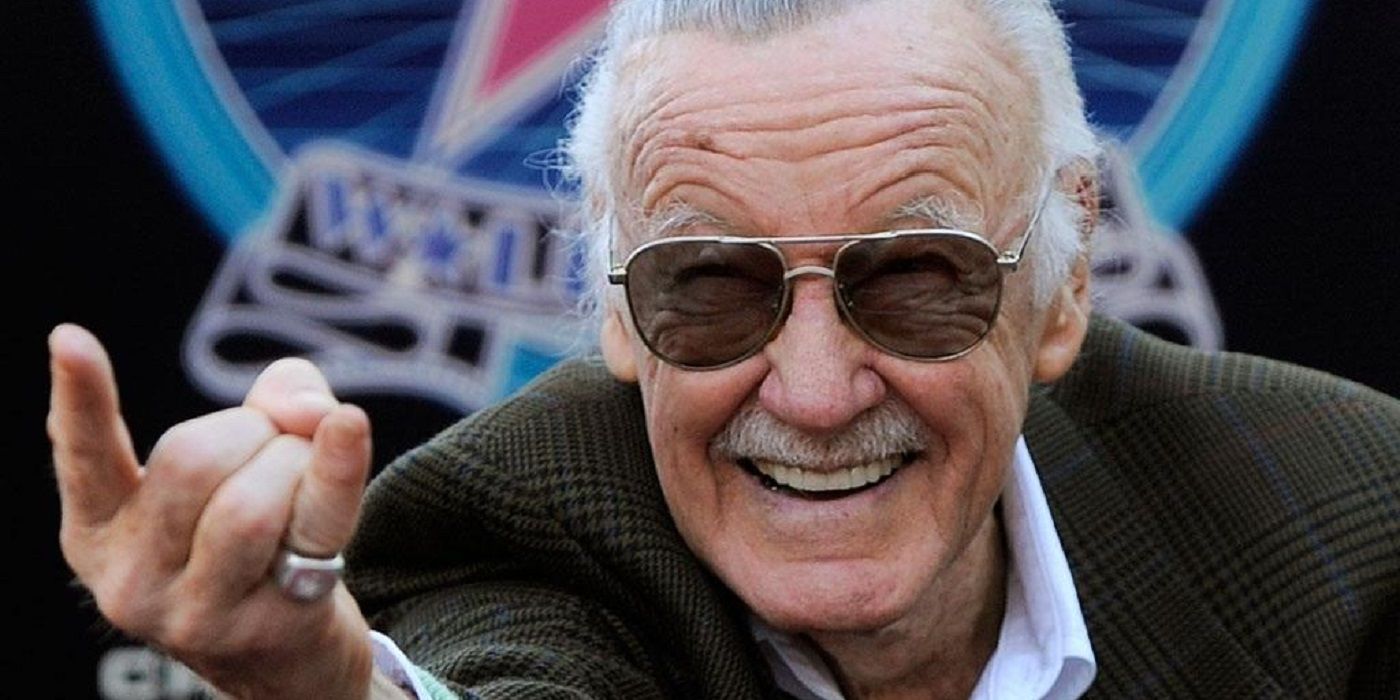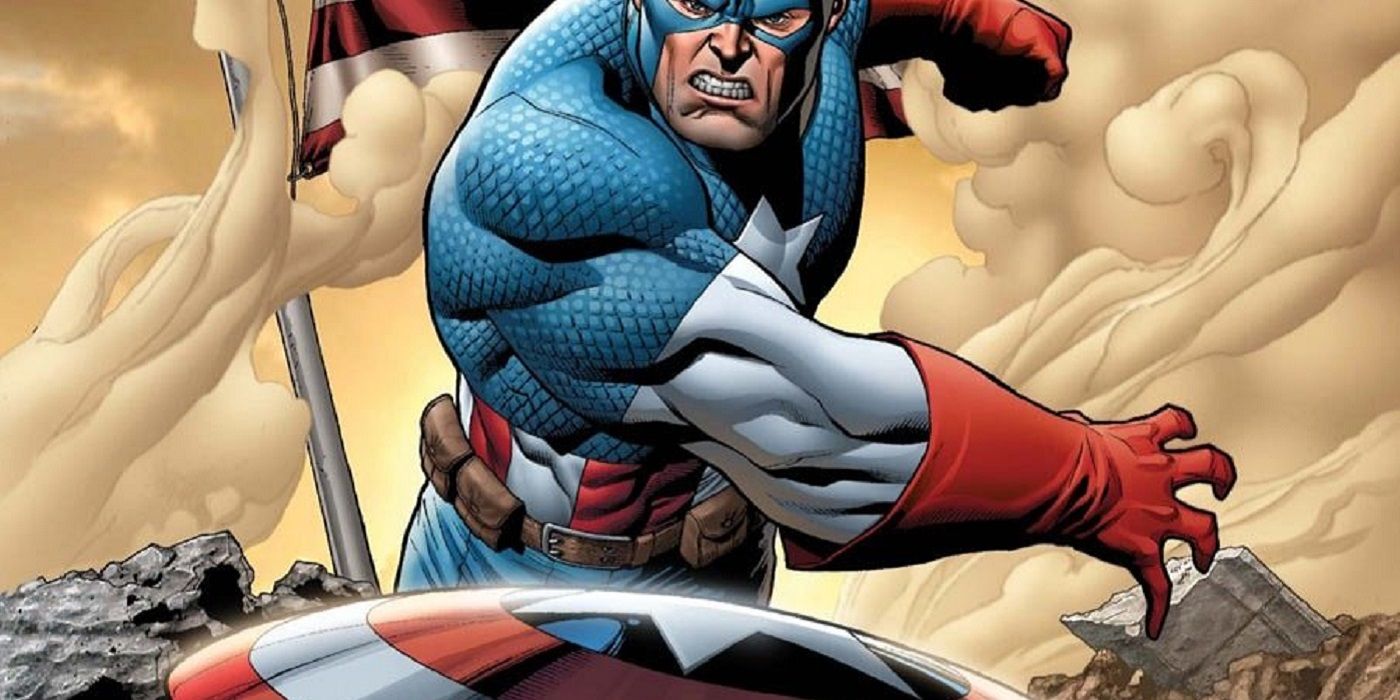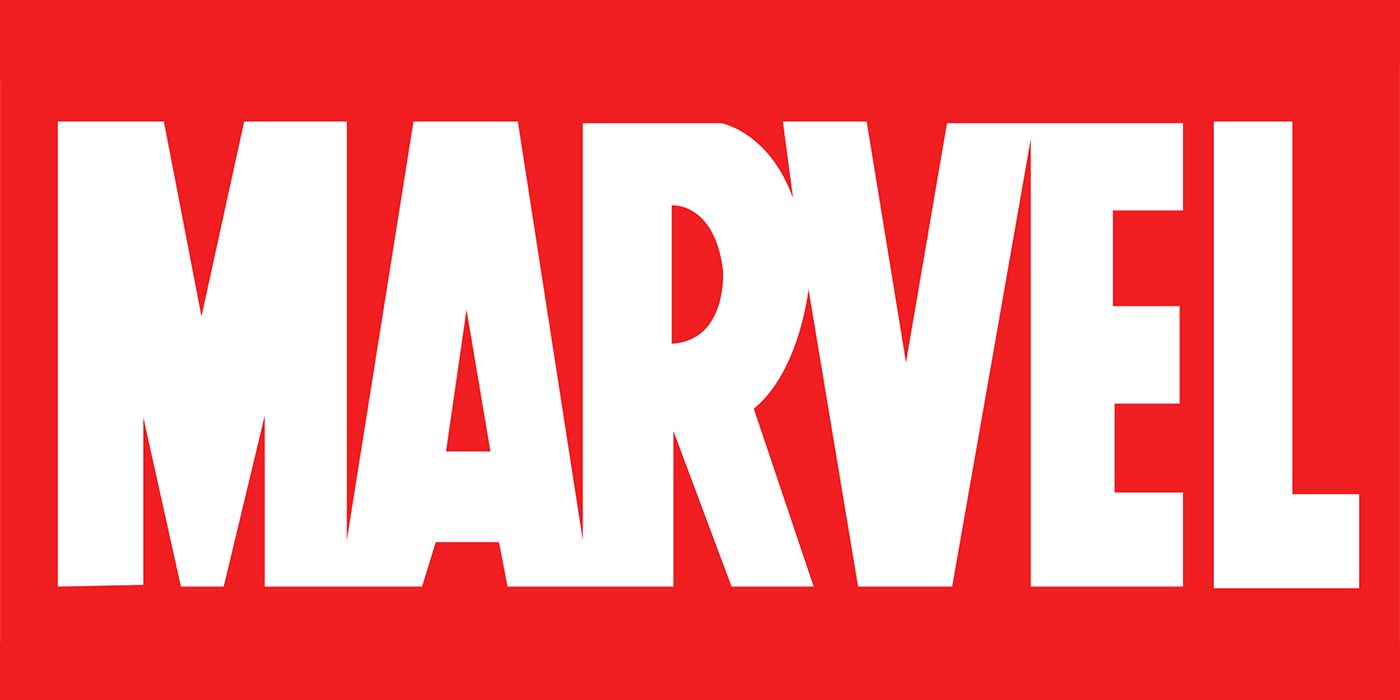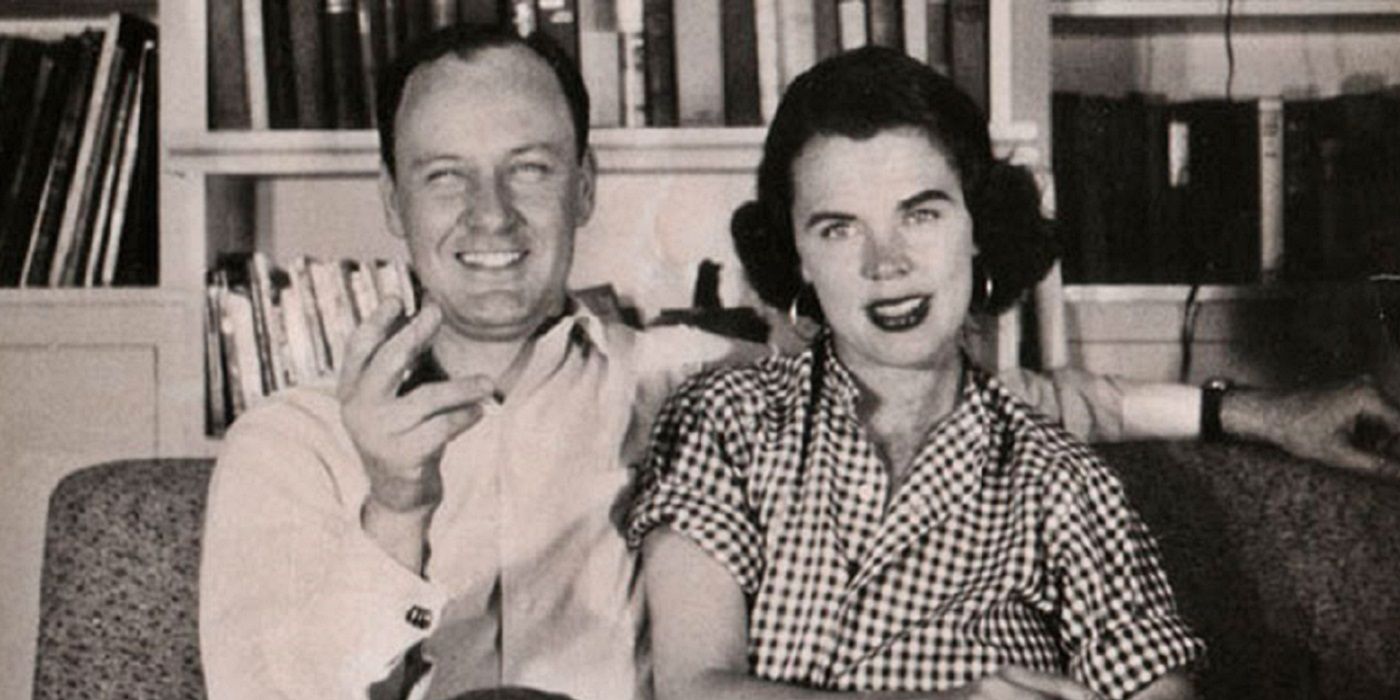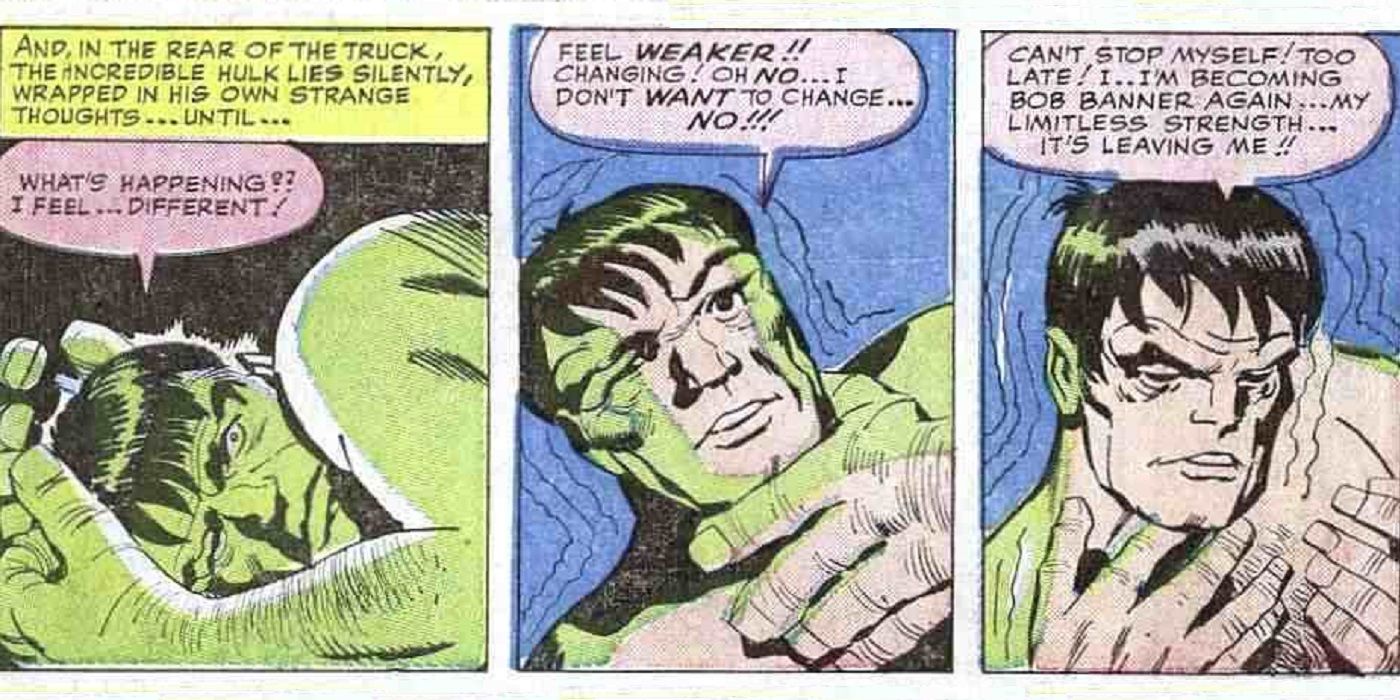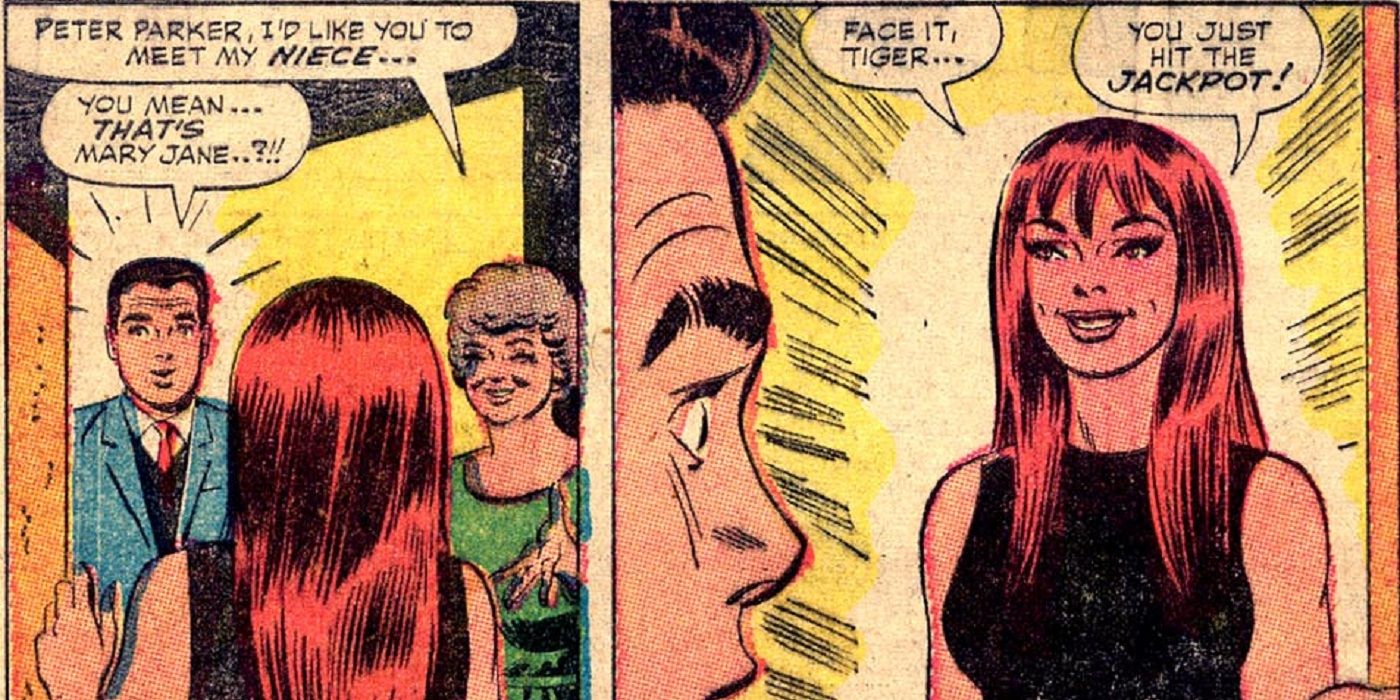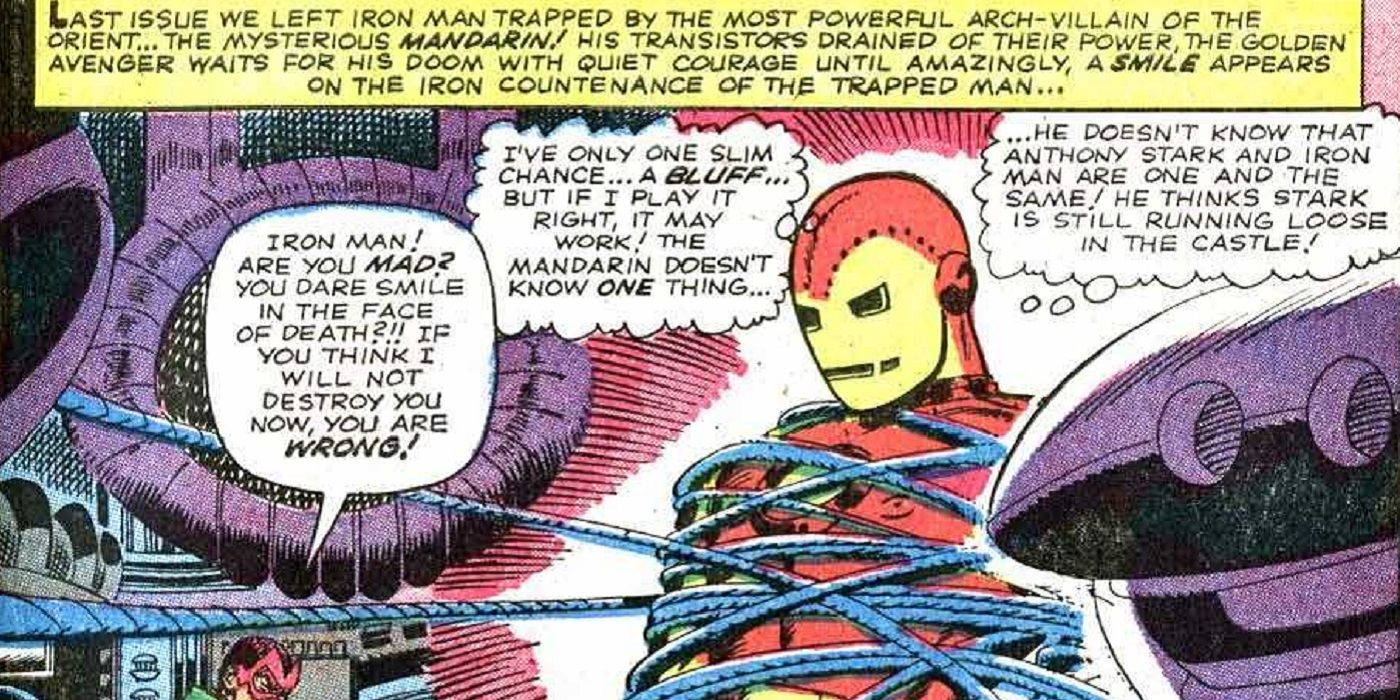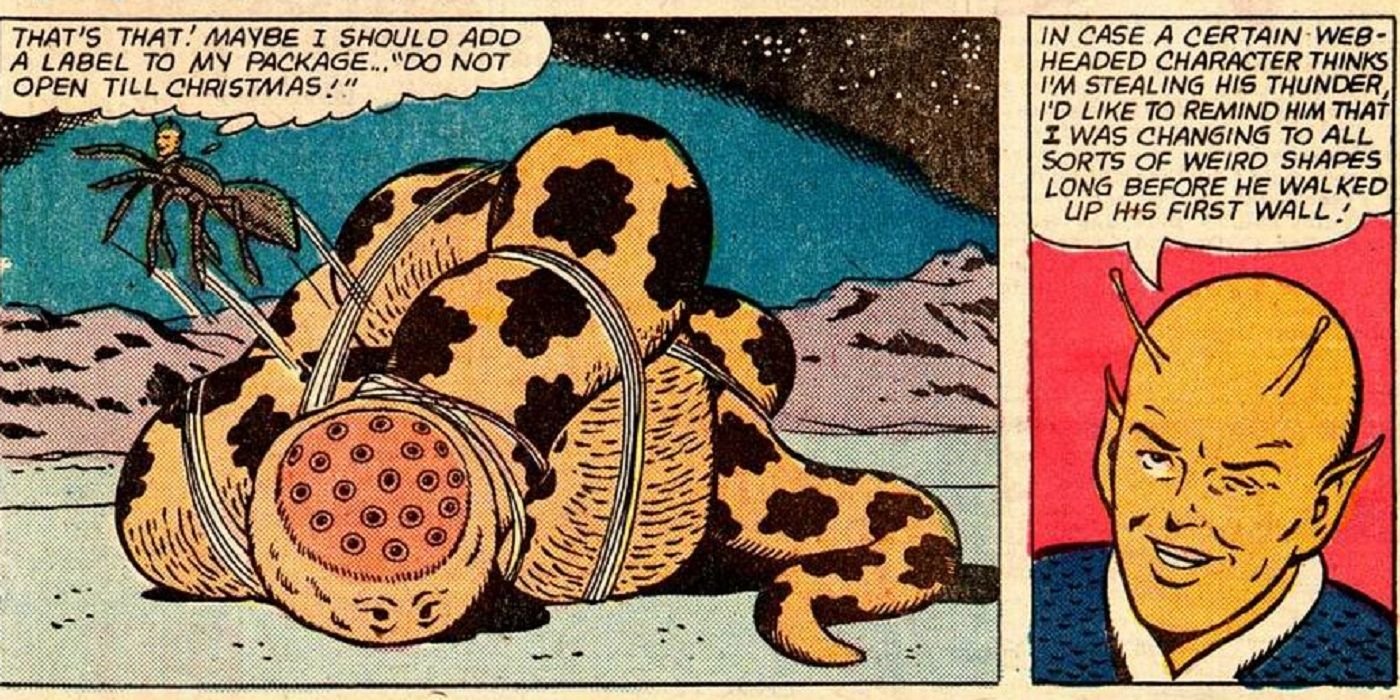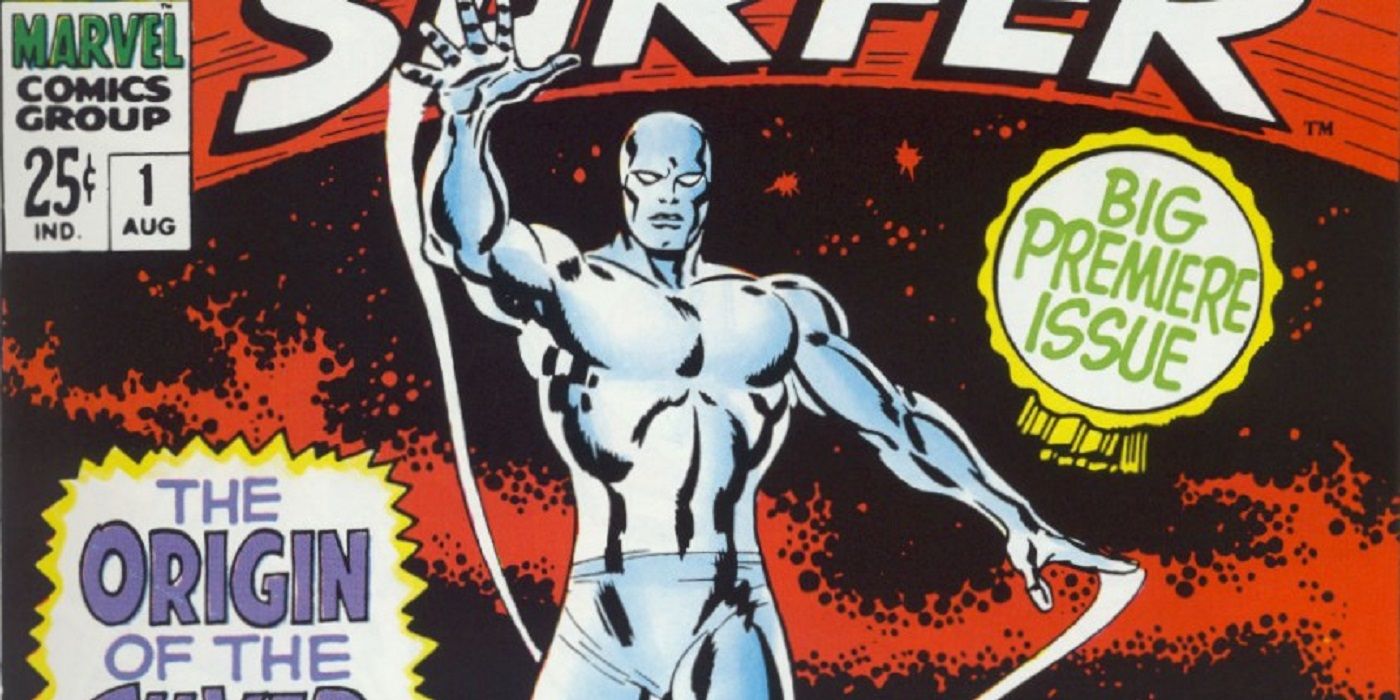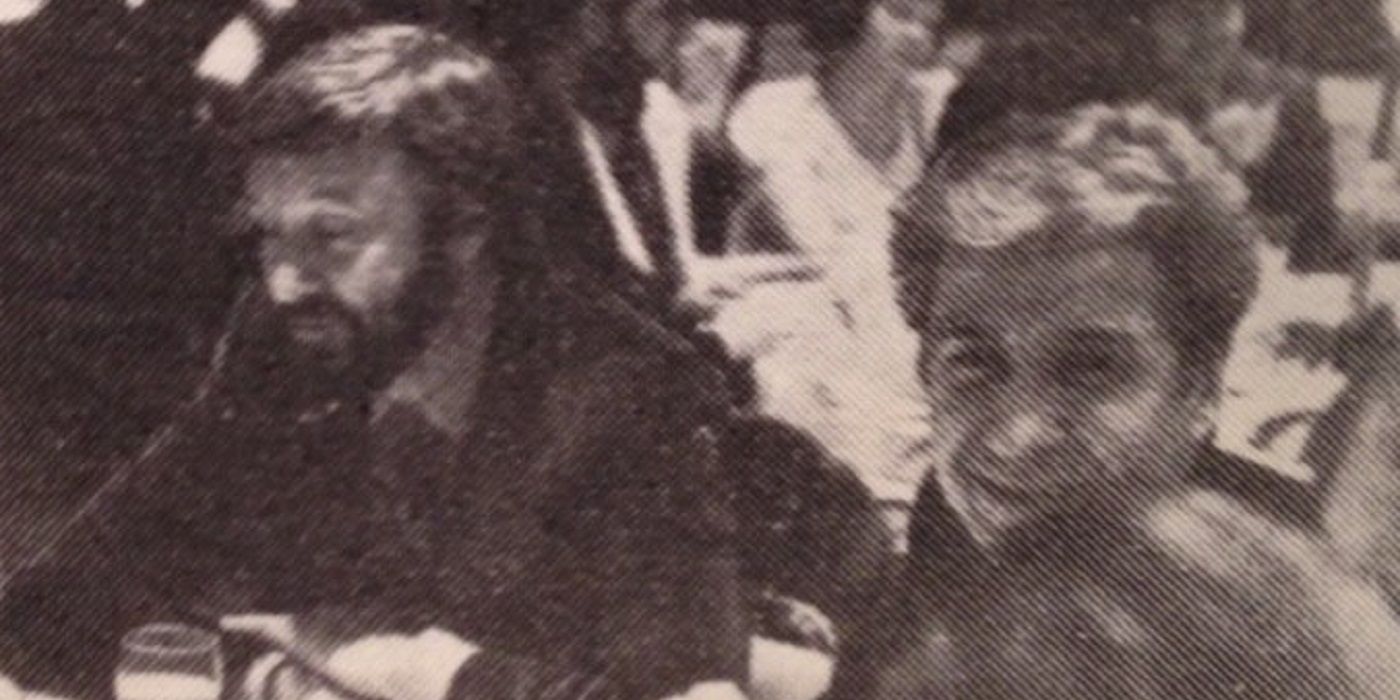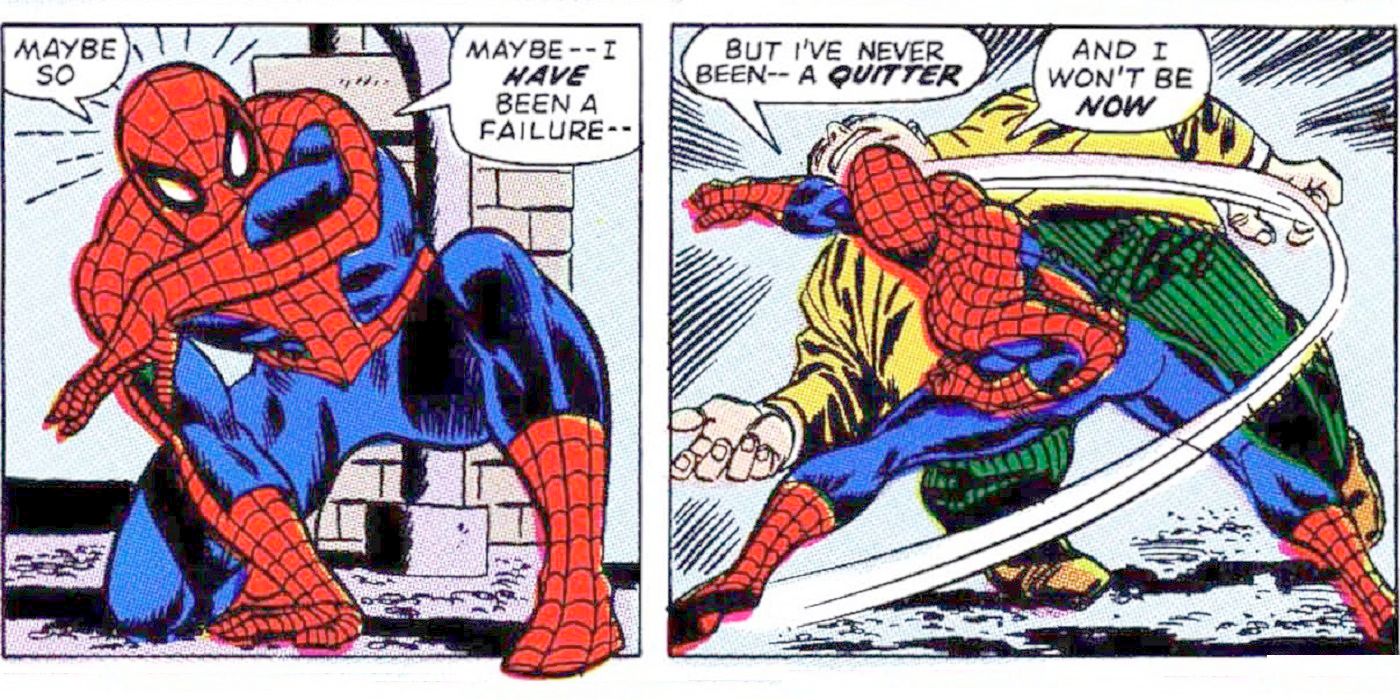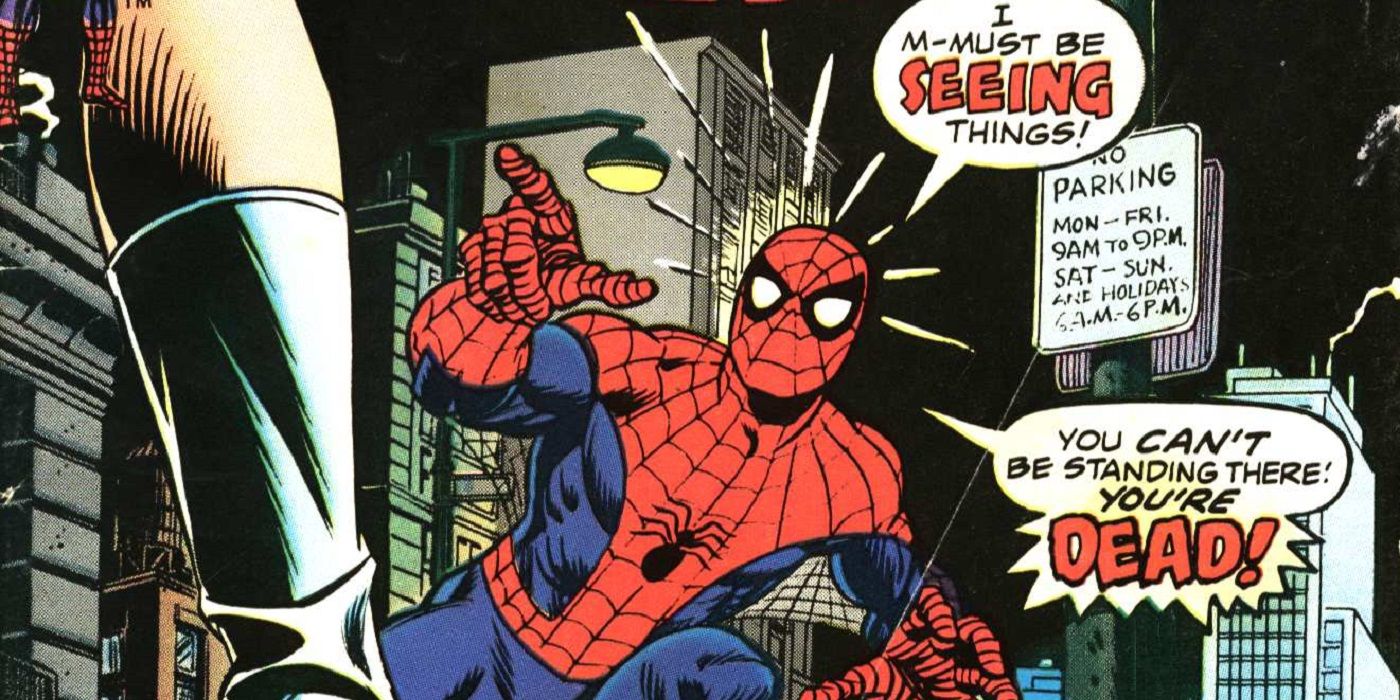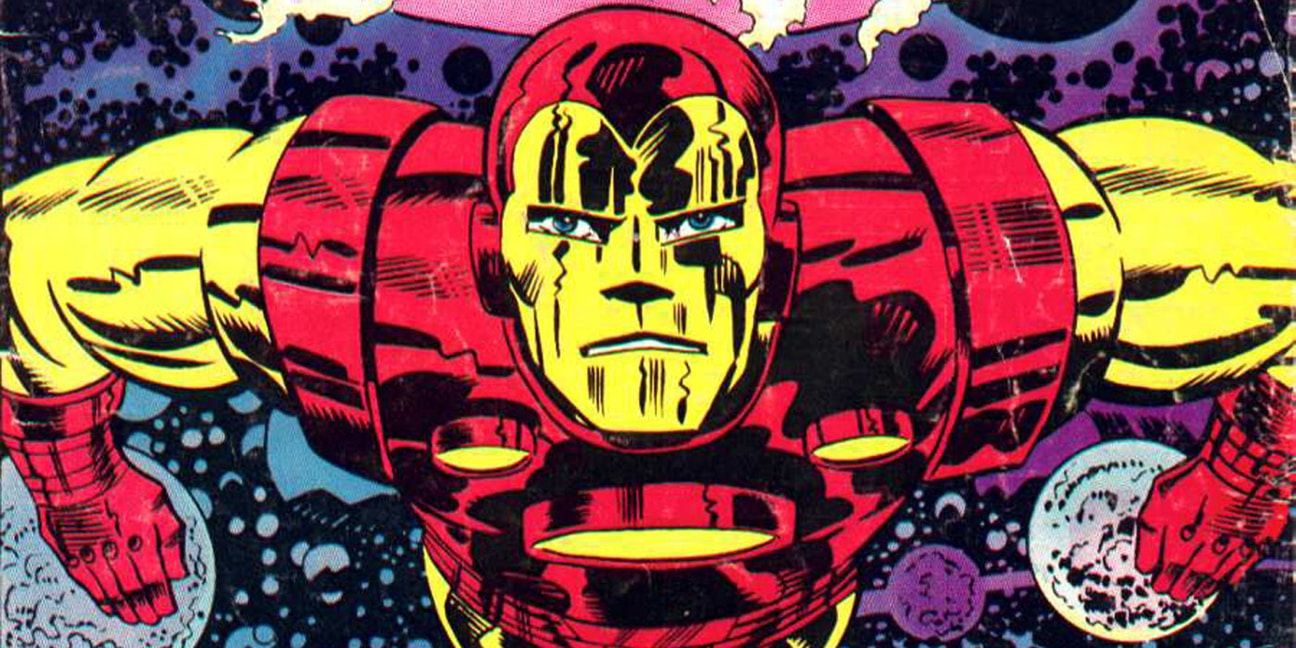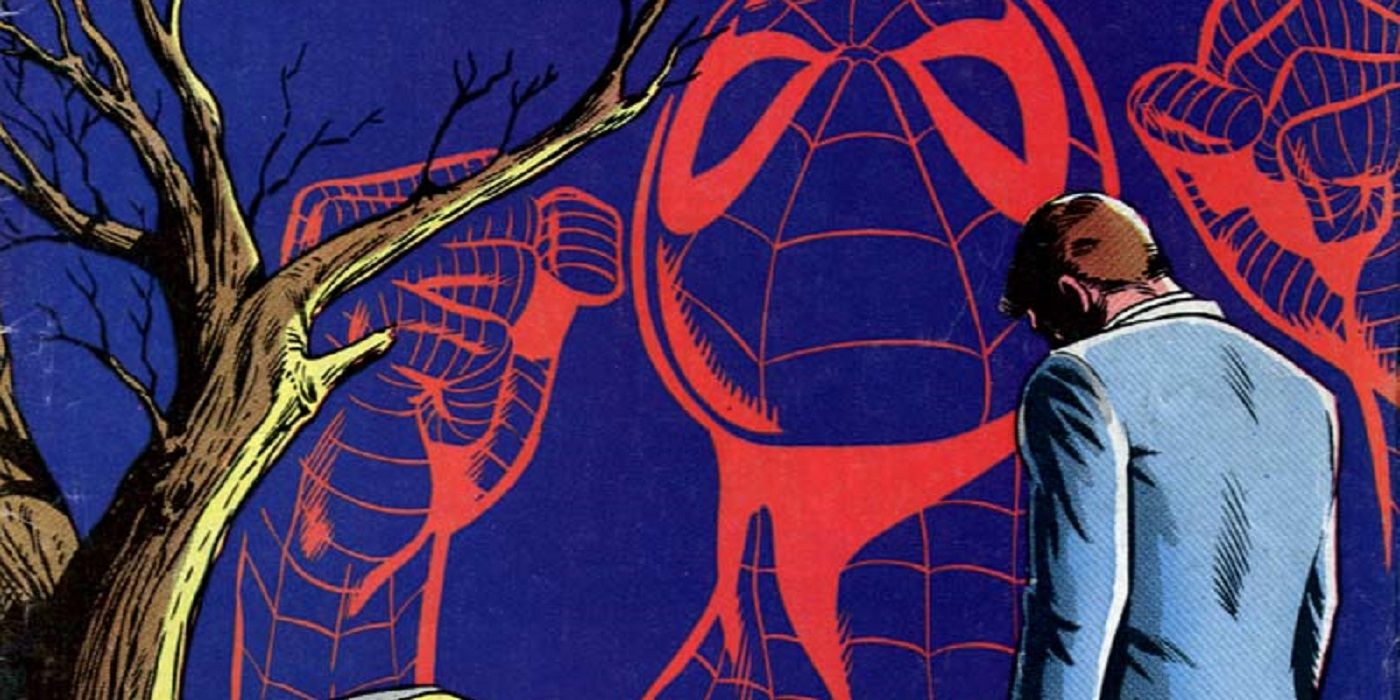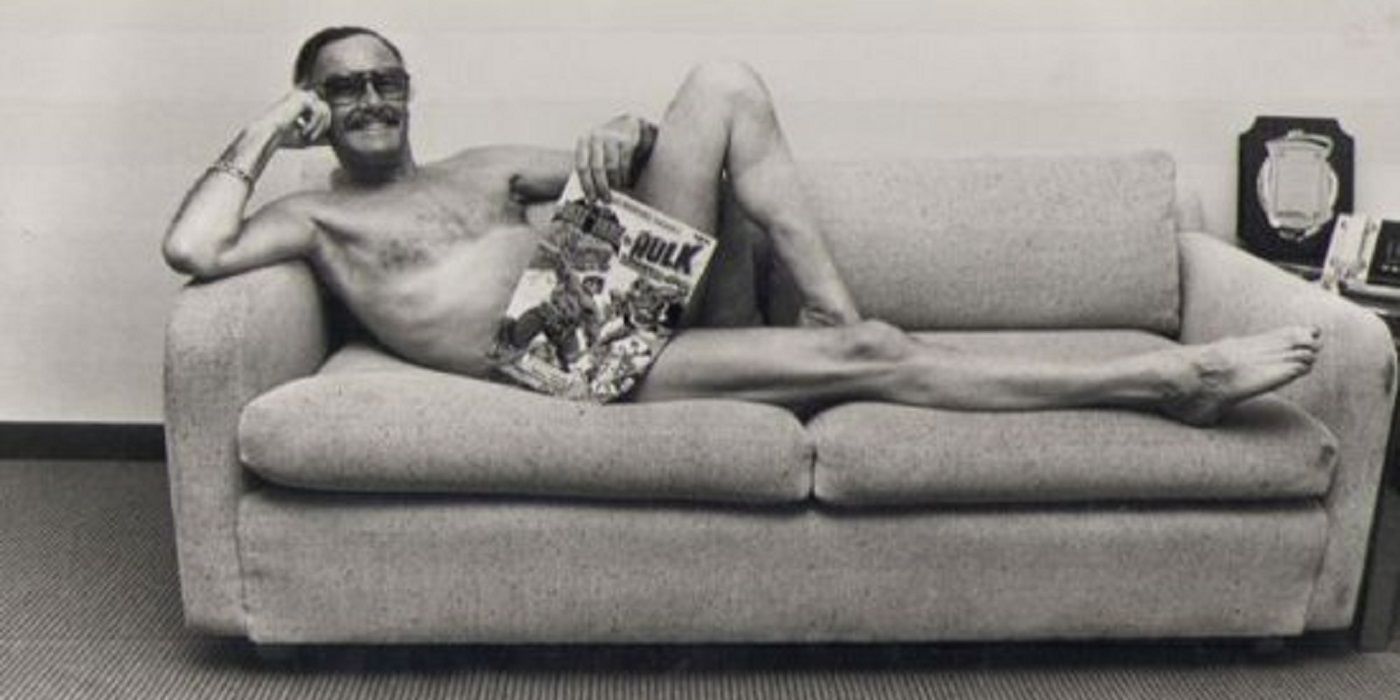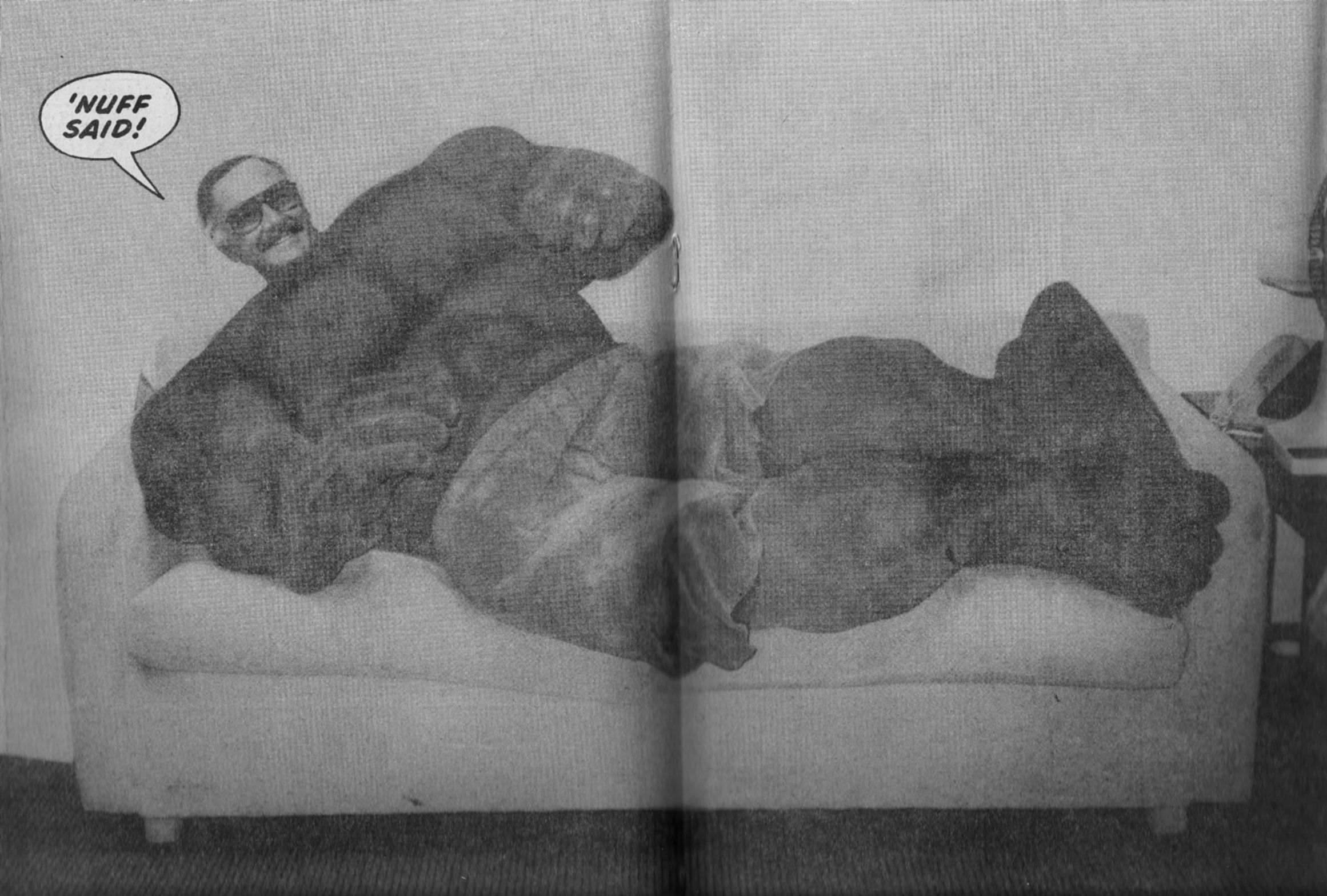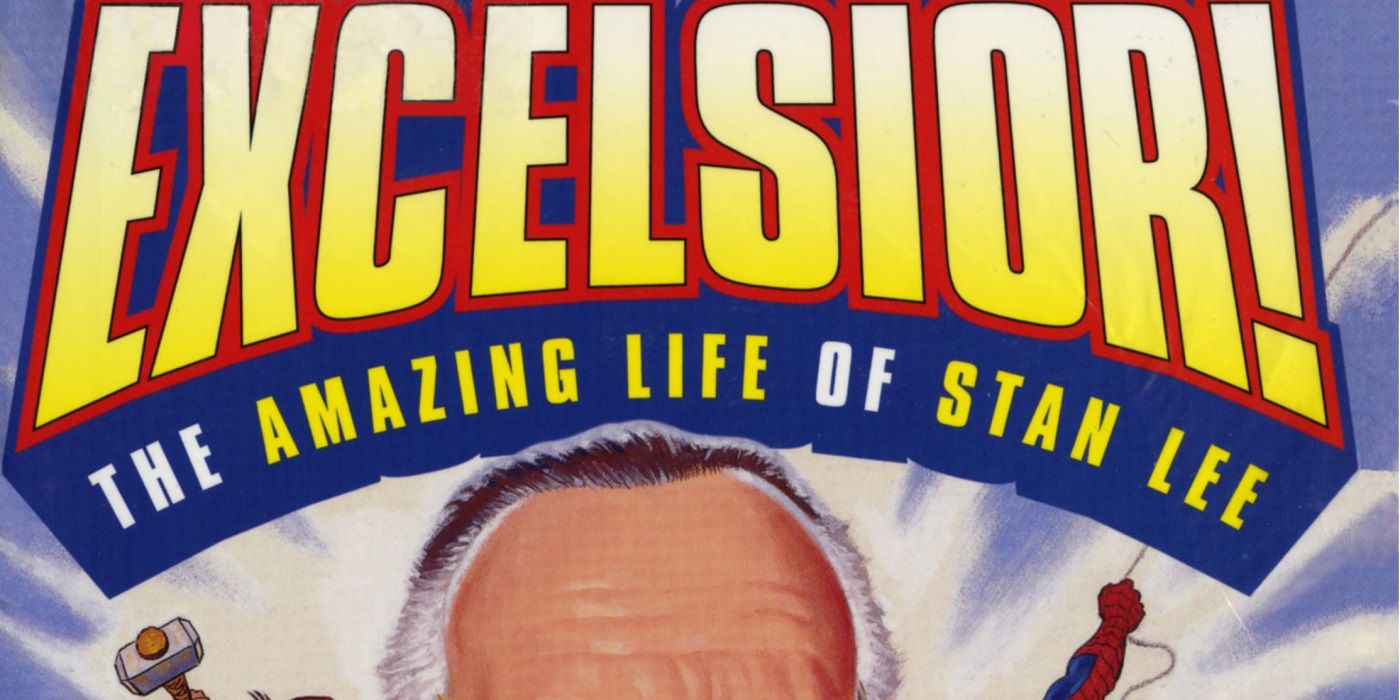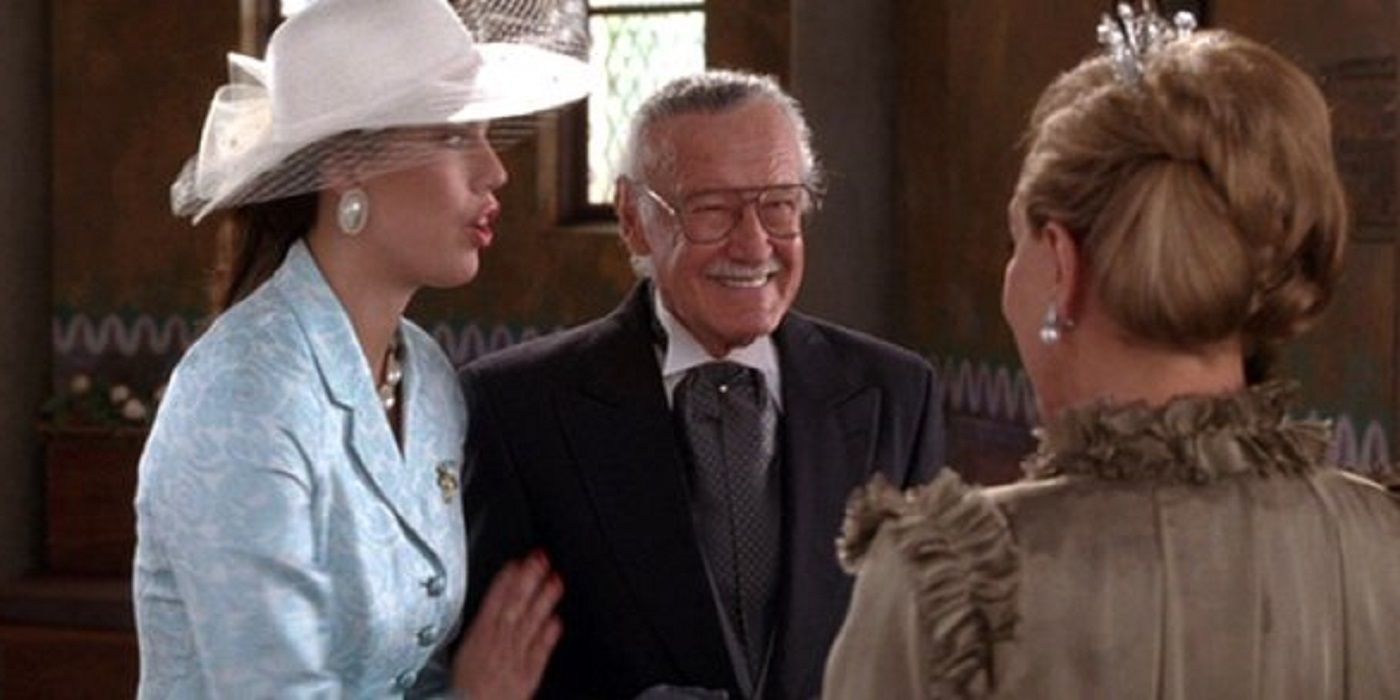Stan Lee (born Stanley Leiber) celebrates his 94th birthday today, still as much of a comic book icon in 2016 that he has been for the past seven decades. Stan Lee (the pseudonym he chose when he first began writing comic books in the early 1940s) became the Editor-in-Chief of Timely Comics before he was even 20 years old. He would hold the position for the next three decades, seeing that small company change names a couple of times and become Marvel Comics in the 1960s, when Lee and classic comic book artists Jack Kirby and Steve Ditko helped start the "Marvel Age" of comics with the introduction of the Fantastic Four, Spider-Man, Iron Man, Thor, X-Men and the Avengers.
RELATED: 15 Marvel Characters You Didn’t Know Stan Lee Co-Created
As Lee has kept up his high profile with cameos in pretty much all of Marvel's cinematic offerings, his life is surprisingly well known to comic book fans. Here, then, are 15 marvelous facts about Stan "the Man" Lee that you might not know!
15 He Made Cap Throw his Shield
When Captain America first debuted in "Captain America Comics" #1 in 1940, Joe Simon and Jack Kirby had him have a shield that was angular, more like a crest. However, that look was very similar to a popular patriotic hero that pre-dated Captain America, MLJ's the Shield (who was their most popular character until the following year, when they introduced a young teen named Archie Andrews, who eventually became so popular that MLJ even re-named their company Archie in his honor). So for the second issue of "Captain America Comics," Simon and Kirby gave the titular hero a round shield.
In those first issues, though, Captain America did not throw his shield often at all. In fact, the first time he ever threw his shield was during a text story in "Captain America Comics" #3. That same story, "The Traitors' Revenge," was the first published work that Stan Lee ever had in a comic book. So in his very first comic book work, Lee was already adding to comic book lore!
14 He Nearly Went out of Business in the '50s
In the early 1950s, the comic book company that eventually became known as Marvel Comics (Atlas Comics) distributed their own comic books. However, in 1956, Martin Goodman, the owner of the company, decided that he no longer wanted to distribute his comics. Comic books also went through a major sales lull that year, mostly thanks to the creation of the Comics Code which dramatically changed what kind of comics the companies were able to sell.
Sadly, the company that Goodman chose to distribute through, American News Company, was being sued by the federal government over the fact that it also owned a large amount of newsstands. They accused the distributor of being a monopoly. Once they were forced to divest themselves of their newsstand business, their biggest clients pulled out and it went under, leaving Atlas Comics with no one to distribute their comics! Goodman worked out a deal with DC Comics, which allowed Atlas to use the distributor that they owned, Independent News Distributors. Had Goodman not worked that deal out, Stan Lee would have been out of a job before Marvel Comics even began!
Still, the deal ended up with Atlas only being allowed to produce 8 books a month, so that cut the line down to 16 bi-monthly books, leading to Lee overseeing a skeleton staff after major layoffs. In 1958, they slowly began growing the company again (new hires Jack Kirby and Steve Ditko helped a whole lot).
13 He Thought Bruce Banner's Name was Bob
In the early days of Marvel, Stan Lee was scripting nearly every book for Marvel (his brother, Larry, was the main alternate scriptwriter, although other writers were also used on occasion). With so many books to write, it was difficult for Lee to keep track of all the characters. It also did not help that Lee has always had a poor memory. One trick that he used was to give the characters all alliterative names, so that it would make it easier to remember what their names were. Peter Parker. Reed Richard. Sue Storm. Stephen Strange. Bruce Banner.
However, such a trick only helps you so far, so Lee got into trouble when he used other alliterarive names by mistake, like "Peter Palmer" or "Bob Banner" in "Fantastic Four" #25. In the case of the Bob Banner mistake, Lee explained away the mistake by revealing that Bruce was Bruce Banner's middle name and that his first name was actually Robert, he just typically chose to go by Bruce.
12 He Forgot to Make Mary Jane Ugly
Lee's poor memory almost had a major effect on "Amazing Spider-Man." Lee initially worked on the series with artist Steve Ditko, who eventually went from plotting the book with Lee to plotting the book by himself. Starting with "Amazing Spider-Man" #25, Ditko would plot the story and then draw it and then send the work in to Marvel where Lee would then add dialogue (Ditko would present notes to show what was going on on each page). Lee and Ditko actually never interacted with each other on Ditko's whole last year on the book.
When Ditko left the book, then, Lee had to take on control of a story that he had not plotted for over a year. So when Lee and new artist John Romita were preparing to introduce the mysterious Mary Jane Watson in "Amazing Spider-Man" #42, Lee had forgotten that Ditko had established back in "Amazing Spider-Man" #25 that Mary Jane was beautiful. Due to him forgetting that story, Lee and Romita debated whether Mary Jane should be revealed as pretty or ugly. Romita luckily convinced Lee to make her beautiful.
11 His Marvel Method led to Multi-Part Storylines
Due to Lee writing so many titles for Marvel, necessity led to the creation of what is now known as the "Marvel Method," which would involve Lee coming up with a plot with the artist on the issue, the artist then going out and drawing that plot however they think the story should go and then Lee would add dialogue to the drawn pages. Over the years, the amount of input Lee would have on the plot would lessen, until artists like Ditko and Jack Kirby were pretty much plotting comic books by themselves.
However, Lee would continue to plot or co-plot stories with other artists, like the Iron Man feature in "Tales of Suspense," which Lee wrote with artists Don Heck and later Gene Colan. It was around this time that Marvel became famous for their multi-part storylines. These stories began based, in part, on the fact that Lee could plot more issues if he gave the artist a plot that would last for multiple issues. Therefore, Lee wouldn't have to work to come up with plots for those other issues. The same amount of work on Lee's end would result in multiple issues' worth of story.
10 He Fought the Legion of Super-Heroes
In a 1966 installment of the "Stan's Soapbox" feature, his special column in which he spoke directly to readers (during a time when a number of comic book companies were debuting, trying to cash in on the popularity of the "Batman" TV series), Lee wrote the following:
Have you noticed the way Brands X, Y and Z have been knocking themselves out trying to imitate the now-famous Marvel style? All of a sudden, we find watered-down versions of our own pulsating plots and devastating dialogue all over the place! But we're going to do something that's never been done before! This should finally prove how big-hearted we really are. We're gonna make it EASY for those panicky pussycats! To save them the trouble of trying to imitate our inimitable style, we're thinking of selling them some of our old scripts!
In "Adventure Comics" #350, the "Legion of Super-Heroes" answered back, as writer E. Nelson Bridwell had Chameleon Boy address the reader directly. Fans wrote in to Lee about this, so he eventually responded a year later in the letter column to "Amazing Spider-Man" #47:
Quite a few indignant Marvelites have commented upon that same reference to Spidey in a mag which we shall charitably not identify. We deeply appreciate the concern of all you True Believers – but don’t worry about it, gang. Any knock is a boost… and our ill-advised competitors have been unintentionally boosting us all over the place!
9 Only He Wrote Silver Surfer
The Silver Surfer famously was not part of the initial plot for "Fantastic Four" #48, but artist Jack Kirby felt that someone like Galactus was bound to have a herald working for him, so Kirby added in the Silver Surfer. He and Lee then centered the story on the Surfer falling to Earth and being inspired by Alicia Masters to fight to save it. Lee took a keen interest in this new character, as Surfer was really well-disposed for stories about the people of Earth and Lee was interested in stories about the human condition.
Kirby, of course, was irked that Lee took over his character (Kirby, for instance, had a backstory in mind that was superseded by Lee's origin for the character in "Silver Surfer" #1). Lee, though, was so into the Silver Surfer that there was a rule at Marvel that no one but Lee could write an ongoing "Silver Surfer" comic book. Lee even had to give permission for other writers to have the Surfer guest-star in other comic books. By the late 1980s, it was clear Lee was no longer interested in this "rule," so Steve Englehart was hired to do a new "Silver Surfer" ongoing series in 1987.
8 He Wrote a Movie with Alain Resnais
Alain Resnais first gained notoriety with his classic 1955 documentary about the Nazi concentration camps, "Nuit et Brouillard" ("Night and Fog"), which was one of the first documentaries to tackle the very difficult subject. Emboldened by his documentary success, Resnais turned to feature films, with his first film, 1959’s "Hiroshima mon amour," firmly placing him among the best of the French New Wave scene. His 1961 film, "L’Année dernière à Marienbad" ("Last Year in Marienbad"), was also acclaimed.
Despite the dark subject matter of his early films, Resnais was a big fan of comic books. In fact, before the release of "Hiroshima mon amour," Resnais was hoping to adapt Herge’s TinTin album, "The Black Island," and even tried to do a film based on Red Ryder! It's not surprising that when he visited New York City some time between 1968 and 1971, he made a point of seeking out Stan Lee, explaining that he learned English through reading Marvel Comics. Around that time, the two decide to work together.
They worked on two films that never happened. The first was called "The Inmates," which never made it out of the treatment stage, while the second was called "The Monster Maker" and Lee actually wrote a full screenplay for it (that it did not get made soured Lee on writing future screenplays. From that point on, he only would do treatments for films).
7 He Banned Exclamation Marks
Lee was going through an interesting period in the early 1970s, as he was becoming more and more well-known and well-respected for his comic book work. He was starting to do a lot of college talks and comic book conventions and his public persona really began to be cultivated around this time. In fact, almost all of Lee's anecdotes about the early days of Marvel were formalized around this point in time. During the 1960s, Lee told many contradictory stories, but around 1971, he seemed to settle on go-to anecdotes, which he still tells to this day.
As he became more respected, he also began to feel a bit more dismissive towards his regular comic book work. When Alain Resnais is asking you to write films, it's a bit hard to get into the latest issue of "Fantastic Four," you know? In any event, at one point in 1971, Lee felt that the tradition of having a lot of exclamation marks in Marvel Comics was childish, so he actually banned their use. He came up with the idea after the issues had already begun to be prepped for printing and the marks were just erased entirely. So, for three months, the two books Lee was still writing at the time -- "Fantastic Four" and "Amazing Spider-Man" -- had weird missing punctuation (the other writers at the time just ignored the banning order). Lee then temporarily stopped writing those two titles, and the incoming writers (Archie Goodwin on "Fantastic Four" and Roy Thomas on "Amazing Spider-Man") did not keep the ban up and Lee seemed to forget about it, as well.
6 The Clone Saga was His Desperation Move
As noted, Lee was becoming more and more of a public figure in the early '70s, while he was also pulling back on his day-to-day involvement at Marvel. This led to an interesting period in time when Lee was out there on the road, constantly promoting Marvel comics while he was not always particularly up to date with what was going on in the comics themselves. This is not to say that people were running things without him, he was just fairly hand's off in his managing style, especially when he became publisher once Martin Goodman sold the company.
This led to a fracas when Gerry Conway killed off Gwen Stacy in "Amazing Spider-Man" #121. Lee later claimed that it had been done without his knowledge, but everyone who worked at Marvel at the time noted how that just wasn't possible. But Lee kept getting such bad reactions from fans at conventions and speeches that he demanded Conway bring Gwen back. He didn't care how, he didn't need her to even stick around, just bring her back somehow so that Lee could tell fans that she was back. Conway's solution was to introduce a clone of Gwen Stacy that led to the original "Spider-Man" Clone Saga!
5 He Accidentally Gave Iron Man a Nose
While Lee was hands-off in general, he was still involved in the managing of the company. However, the editors at Marvel soon grew to be a bit fearful of how he handled things. He would stop by to look at the covers, give his notes and move on. The issue is that he would sometimes give contradictory notes and people did not know what to do. Or he would say something and people would be too nervous to question him about what he meant, leading to confusing results.
One of these confusing results came when Lee looked at a drawing of Iron Man on one comic and said, "Shouldn't there be a nose there?" Lee’s remark was based on the notion that he thought Iron Man's helmet was drawn so small, it was practically Iron Man’s face, and that it did not look like a face mask would be able to accommodate a nose. That was translated as "Iron Man should have a nose on his helmet." So, that's what they did. It was so silly that it did not last long.
4 He Banned the Color Green
When Jim Shooter became Editor-in-Chief of Marvel in the late 1970s, the great George Roussos was in charge of coloring pretty much every cover. Once he became Editor-in-Chief, Shooter began to oversee Roussos’ work a bit more and they soon came into conflict over "The Master of Kung Fu" #68, which Roussos refused to color the way Shooter asked him to, with yellow silhouetted characters on a green background. Roussos explained to Shooter that Stan Lee wouldn’t allow the color green as a background color on the cover of any Marvel Comics, iunder pain of firing. Shooter and Roussos went back and forth, with Roussos eventually capitulating (Shooter said he would take the blame for any consequences). Shooter then took the colored cover to Stan Lee’s office and showed it to Stan (while within earshot of Roussos) and asked Lee about it. Lee liked it.
As it turned out, like the nose comment, Lee would say something offhand and it would be taken as gospel, though Lee would typically forget it right away. He’d say something hyperbolic and not really mean it, but everyone would presume that he did. All things considered, it was probably best for all concerned when Lee gave up his job as publisher. It allowed him also to move to California full-time.
3 He Posed Nude
The "Marvel Fumetti Book" was one of a few Direct Market releases Marvel made in the early 1980s that seemed to be geared to the really devoted Marvel fan, as it was a series of stories about the Marvel Bullpen told through “Fumetti,” the Italian term for comics that has been used in America to mean “photonovels" (stories in the format of comic books, along with word balloons, but instead of drawings in the panels, they're actual photographs).
One of the stories involves Joe Rubinstein trying to get the female staffers at Marvel to do a wet T-Shirt contest. Instead, he ended up getting splashed with water. Later, the female staffers were celebrating turning the tables on Rubinstein and wondering how they were going to be able to top that. In walked Stan Lee, talking about someone doing a centerfold for the book. In the published comic book, Lee is wearing a giant Hulk costume...
But in the original photograph, he was nude, covered only by a copy of the then-recent "Batman/Incredible Hulk" team-up. If only he had used an issue of "Giant-Size Man-Thing" to cover himself! What a missed opportunity!
2 He Stopped a Book Called "Excelsior"
One of Stan Lee's most famous catch phrases is "Excelsior!" which is actually the official motto of the state of New York (it's a Latin word most commonly translated as "Ever Upward!" which is certainly something Lee believed in). Lee's company, Pow! Entertainment, trademarked the phrase and it was the title of Stan Lee's biography.
This became an issue when Brian K. Vaughan introduced a superhero support group filled with young lesser-known superheroes in the pages of "Runaways." They called themselves Excelsior. That was fine, because Marvel was not using the name Excelsior in any advertisements or as the title of the book -- basically, they were not using the mark in commerce, so it did not conflict with Lee's trademark. However, in late 2006/early 2007, they announced plans for a mini-series featuring Excelsior. Marvel backed off on using the name in the title, so they settled on "The Loners."
1 He Made One Weird Cameo Everyone Forgot
Amusingly enough, Stan Lee is probably best known to the general public as "that guy who makes cameos in pretty much every Marvel movie," with some of the cameos being rather elaborate. However, Lee's cameos go beyond just Marvel movies or even genre films and shows. In 2004, Lee bizarrely appeared in the film "The Princess Diaries 2," where he plays a dignitary attending a royal wedding. He got to play a foreign-speaking man who was obsessed with "Three Stooges" films. He interacted with Julie Andrews, even!
So why the cameo in such a film? The director was Garry Marshall, who went to the same all-boys high school in the Bronx as Lee; they both have tributes at the school and saw each other often at school functions. It was most likely that connection that led to Lee making the weirdest cameo of his career (again, he's not even playing himself! It's utterly bizarre!).
What's your favorite story about Stan Lee? Share it in the comments section!

